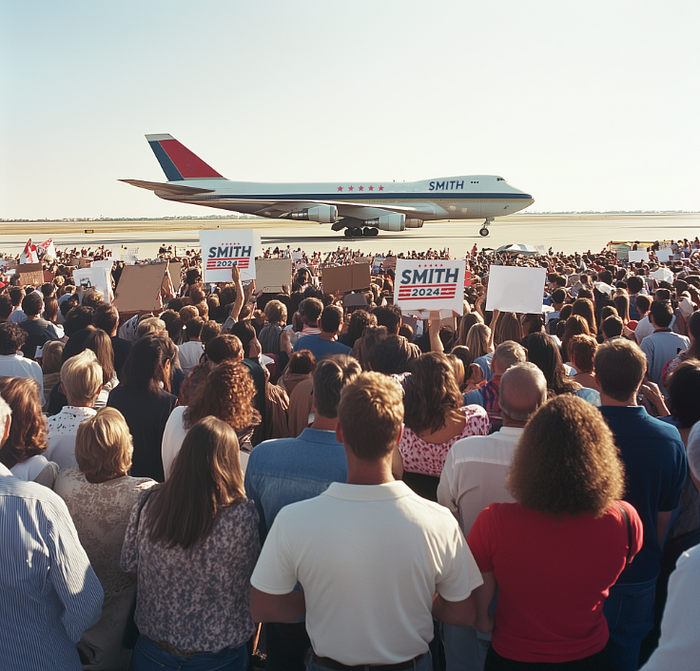Creating a Campaign Rally with AI: Insights on Political Deception
Written on
Chapter 1: The Inspiration Behind the Experiment
Recently, Donald Trump made a bold assertion regarding Kamala Harris, claiming her Michigan campaign rally photo was artificially generated. This assertion was quickly debunked, revealing that Harris' photo was authentic. However, it sparked a curiosity within me: can generative AI truly produce a realistic campaign image that could deceive people or raise skepticism about its authenticity?
To delve into this question, I decided to construct a fictitious Presidential campaign for myself, dubbed "SMITH 2024," and create an AI-generated rally photo that closely mirrored the style of Harris' genuine rally.
Section 1.1: Crafting the Base Image
My initial task involved generating a base image, which would serve as the foundation for my campaign rally. For this, I utilized Midjourney, the leading AI image generator on the market, which recently launched its V6 update, enhancing the realism of its outputs.
To replicate the visual layout of Harris' rally, I carefully crafted a prompt for Midjourney. The initial results were hit or miss, with some images displaying oddities such as heads appearing detached from bodies or an outdated Soviet aesthetic.
After several attempts, I finally obtained a reasonably authentic-looking image that captured the essence of Harris' rally.

Section 1.2: Refining the Details
The most significant flaw in my initial image was the text on the signs, which appeared nonsensical and artificial. To address this, I imported the image into Photoshop and employed features like Generative Fill and Spot Healing Brush to eliminate the text while maintaining a realistic background.
It’s worth noting that the distinction between AI-generated images and those altered with Photoshop is becoming increasingly blurred. Modern Photoshop integrates numerous AI functions, making it nearly impossible to separate the two.
After editing, I was left with a blank canvas where I could insert campaign logos for my fictional campaign.
Chapter 2: Enhancing the Image with AI Tools
To create a logo for "SMITH 2024," I turned to OpenAI's DALL-E, which generated a vibrant campaign poster with a patriotic color scheme.
I then used Photoshop's "Remove Background" feature to integrate this logo into my rally image, meticulously adjusting the positioning, colors, and opacity to ensure a seamless appearance.
I also incorporated a custom livery for my campaign's fictional 747, designed by DALL-E, which added a touch of authenticity to my rally image.
The Final Outcome
After utilizing several advanced AI tools and applying my editing skills, I successfully created a convincingly fake rally photo. While experts might spot the irregularities upon closer inspection, the image could easily mislead casual viewers on social media platforms.
The accessibility of these tools means that anyone with a basic understanding of Photoshop can produce a similar image in a matter of hours. This raises significant concerns about the integrity of political imagery in the digital age.
As evidenced by Trump's own misleading posts, the ease of generating convincing AI images could have far-reaching implications for political discourse and public perception.
In conclusion, while today's AI image generators can create seemingly realistic political images, the capacity to produce authentic-looking videos remains limited. Verifying the authenticity of political events will increasingly depend on both image provenance and video evidence.
As AI technology continues to evolve, maintaining the integrity of political communication will require vigilance and a critical approach to content consumption.